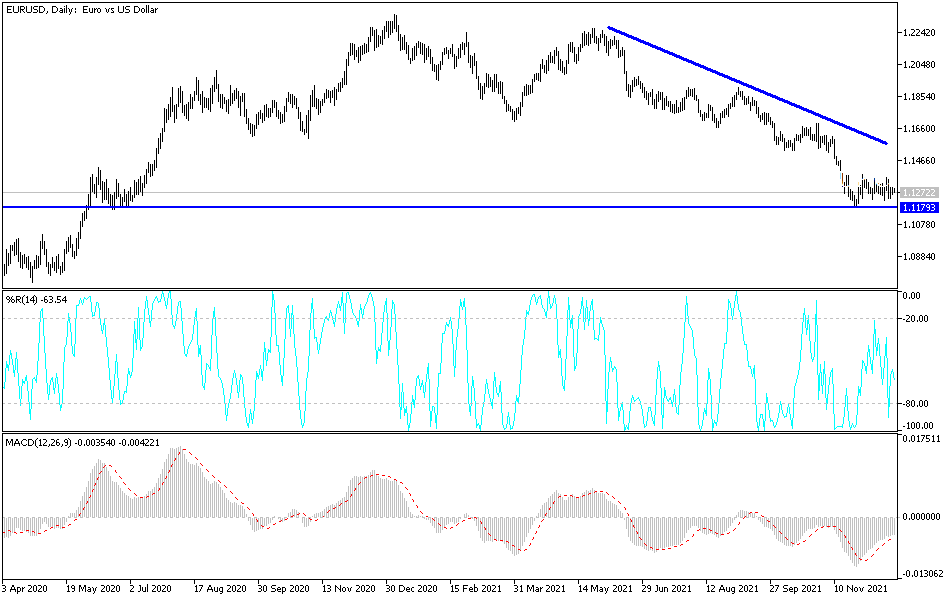There is nothing new about the weak euro, as the European pandemic restrictions may weaken the economic activity of the bloc, and thus appetite for the euro. The EUR/USD currency pair is still stable around the 1.1275 support level at the time of writing, amid investors abandoning the risk ahead of the holiday season, which lacks liquidity and comes before the annual trading closings. The US dollar is still the strongest, as the economic improvement of the largest economy in the world supports the US central bank's tendency to raise interest rates. This is in addition to the demand for it as a safe haven in light of the global concern about the Corona Omicron variable.
Yesterday, preliminary results of a monthly survey conducted by the European Commission showed that consumer confidence in the Eurozone deteriorated for the third consecutive month to its weakest level since March. The Flash Consumer Confidence Index fell to -8.3 from -6.8 in November. Economists were looking for a score of -8.0. The latest reading was the worst since March, when the score was -10.8.
The corresponding indicator for the European Union fell to -9.6 from -8.2 in the previous month. It was also the worst reading since March. The commission said both indicators are now well below their pre-pandemic level and close to their long-term average in both areas. Survey data was collected from 1 to 20 December. Final numbers will be released along with the monthly Economic Sentiment Survey data on January 7.
Survey results from market research group GfK showed that German consumer confidence is expected to fall sharply in January due to restrictions imposed amid the fourth wave of the pandemic and rising inflation. Forward-looking consumer confidence fell to -6.8 in January from -1.8 in December. The expected reading was -2.7. Commenting on the results, Rolf Burkel, consumer expert at GfK, said that the high accidents due to the fourth wave of the Corona pandemic with more restrictions as well as significantly increased prices are increasingly affecting the consumer climate. The outlook for the start of next year, Burkel added, is also weak on the back of the rapid spread of the Omicron variant.
The survey showed that economic expectations, income expectations and propensity to buy declined significantly in December. Largely due to supply chain issues, the Economic Sentiment Index fell 13.9 points to 17.1. This was the third consecutive decline. The last lower value of economic confidence was measured eight months ago.
For the third time in a row, income expectations have fallen significantly. The index fell six points to 6.9 points in December. High energy and food prices weaken the purchasing power of consumers' incomes. In addition, there is a risk that the so-called wage-price spiral will be triggered in the medium and long term, the survey revealed. Meanwhile, the propensity to buy fell to 0.8 in December from 9.7 a month ago.
Technical Analysis
Technical indicators still indicate the possibility of the EUR/USD staying in a bearish trend, especially with stability below the 1.1300 support. In order for the technical indicators to move towards oversold levels on the currency pair, the pair needs to move towards the support levels 1.1215 and 1.1155 and 1.1070. On the upside, and according to the performance on the daily chart, there will be a breach of the current bearish channel only by moving towards the 1.1620 resistance, otherwise the general trend will remain bearish and I still prefer to sell the EURUSD from every ascending level.
Today, the US economic growth reading, the country's consumer confidence reading and the existing home sales will be released.


